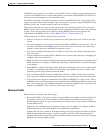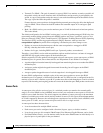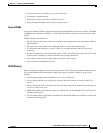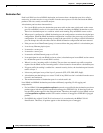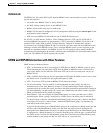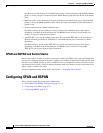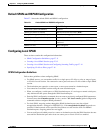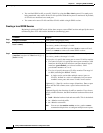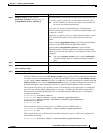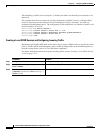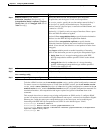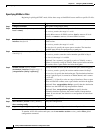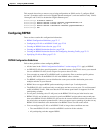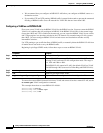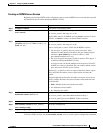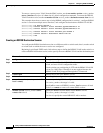
27-13
Catalyst 2960 and 2960-S Switch Software Configuration Guide
OL-8603-09
Chapter 27 Configuring SPAN and RSPAN
Configuring SPAN and RSPAN
To delete a SPAN session, use the no monitor session session_number global configuration command.
To remove a source or destination port or VLAN from the SPAN session, use the no monitor session
session_number source {interface interface-id | vlan vlan-id} global configuration command or the no
monitor session session_number destination interface interface-id global configuration command. For
destination interfaces, the encapsulation options are ignored with the no form of the command.
This example shows how to set up SPAN session 1 for monitoring source port traffic to a destination
port. First, any existing SPAN configuration for session 1 is deleted, and then bidirectional traffic is
mirrored from source Gigabit Ethernet port 1 to destination Gigabit Ethernet port 2, retaining the
encapsulation method.
Switch(config)# no monitor session 1
Switch(config)# monitor session 1 source interface gigabitethernet0/1
Switch(config)# monitor session 1 destination interface gigabitethernet0/2
encapsulation replicate
Switch(config)# end
This example shows how to remove port 1 as a SPAN source for SPAN session 1:
Switch(config)# no monitor session 1 source interface gigabitethernet0/1
Switch(config)# end
This example shows how to disable received traffic monitoring on port 1, which was configured for
bidirectional monitoring:
Switch(config)# no monitor session 1 source interface gigabitethernet0/1 rx
Step 4
monitor session session_number
destination {interface interface-id [, | -]
[encapsulation {dot1q | replicate}]}
Specify the SPAN session and the destination port (monitoring port).
For session_number, specify the session number entered in step 3.
Note For local SPAN, you must use the same session number for
the source and destination interfaces.
For interface-id, specify the destination port. The destination
interface must be a physical port; it cannot be an EtherChannel, and
it cannot be a VLAN.
(Optional) [, | -] Specify a series or range of interfaces. Enter a space
before and after the comma; enter a space before and after the
hyphen.
(Optional) Enter encapsulation dot1q to specify that the destination
interface uses the IEEE 802.1Q encapsulation method.
(Optional) Enter encapsulation replicate to specify that the
destination interface replicates the source interface encapsulation
method. If not selected, the default is to send packets in native form
(untagged).
Note You can use monitor session session_number destination
command multiple times to configure multiple destination
ports.
Step 5
end Return to privileged EXEC mode.
Step 6
show monitor [session session_number]
show running-config
Verify the configuration.
Step 7
copy running-config startup-config (Optional) Save the configuration in the configuration file.
Command Purpose



